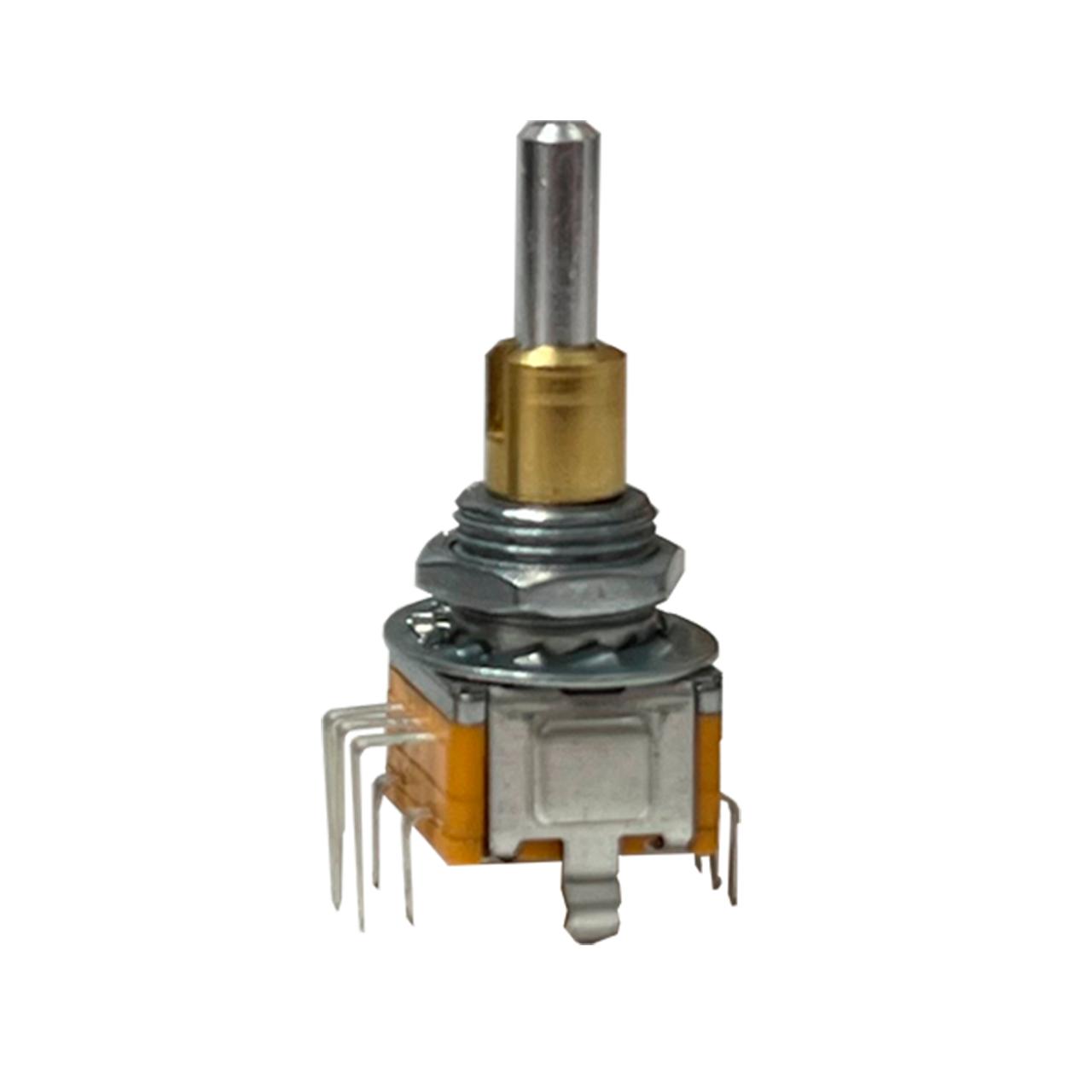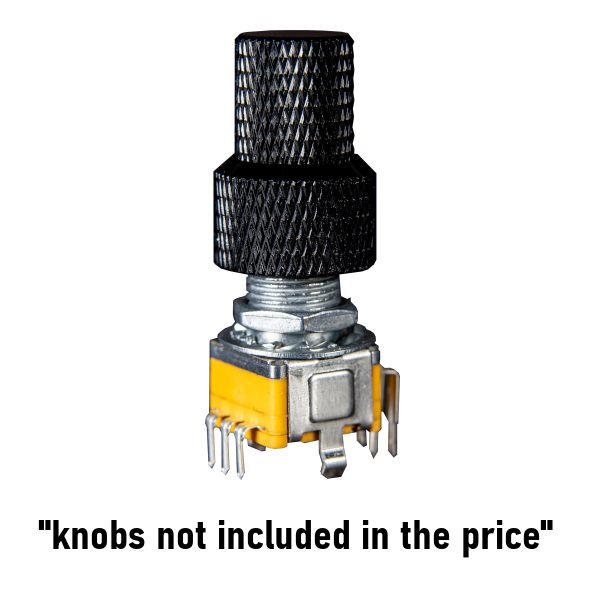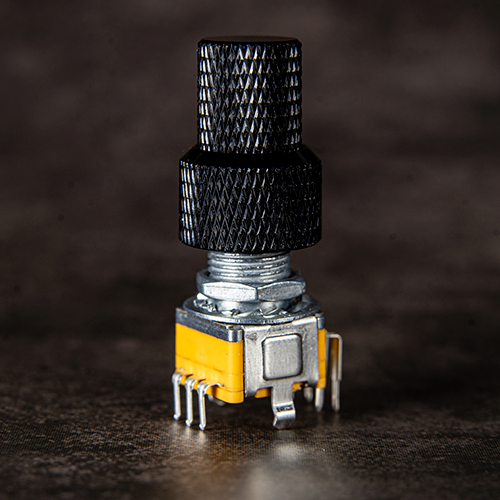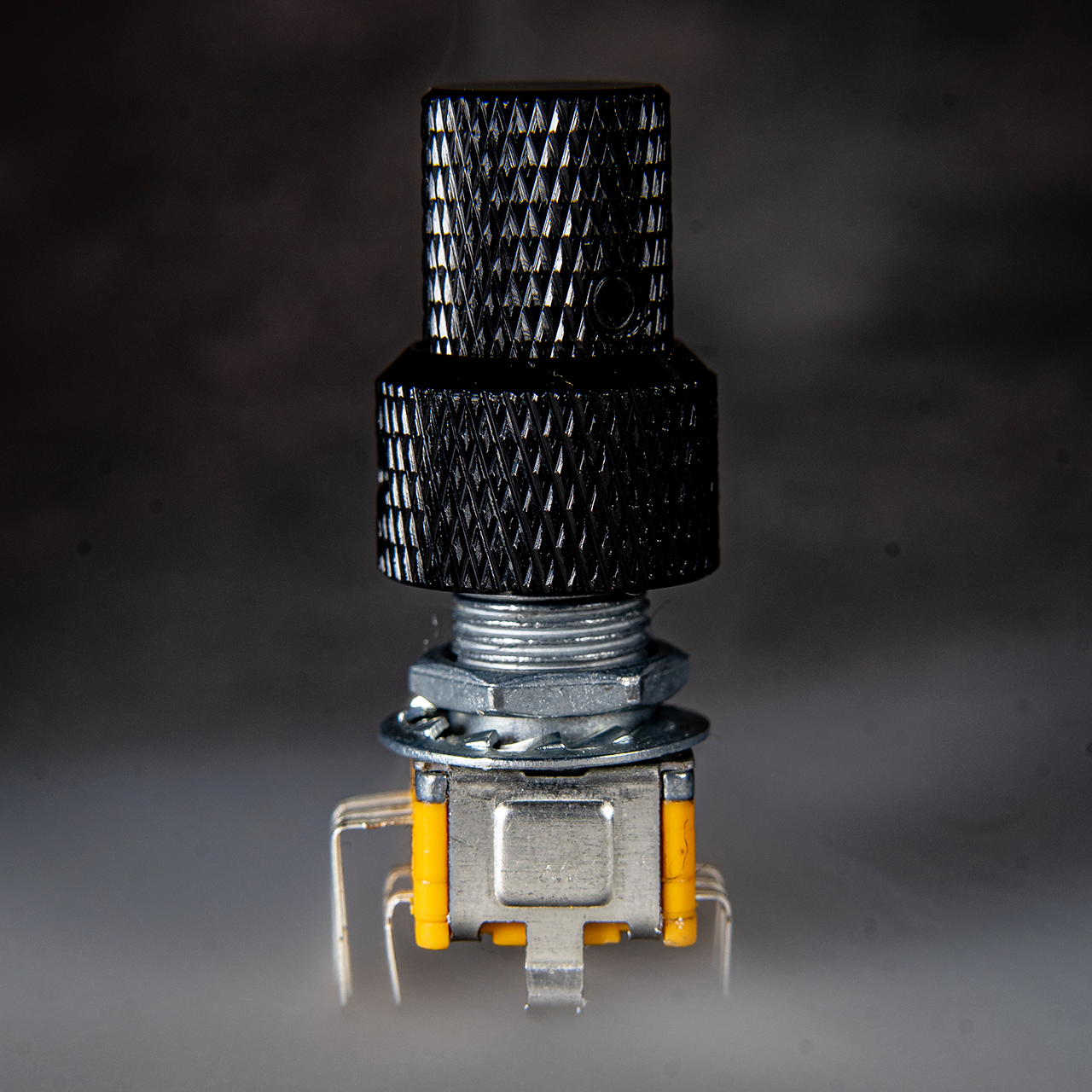Dual Rotary Encoder + Switch for Flight Simulators
This dual rotary concentric encoder kit includes a dual-shaft EC11 with integrated push button, perfect for building G1000 panels in flight simulators like MSFS and X-Plane.
In Stock
6,00 €
– Unmatched Versatility and Precision. Dual encoder for flight simulator
Our EC11 dual-shaft encoders stand out in the market with unique features tailored for simulation panel applications. Designed with a precisely machined threaded body, these encoders are built for seamless panel mounting using their dedicated nut.
What sets our EC11 encoders apart:
-Threaded Design: Ideal for secure and easy installation on simulation panels.
-Complete Solution: They are compatible with our aluminum knobs for both inner and outer shafts, offering a polished and professional finish.
-Enhanced Connectivity: Optional electronic board available for effortless cable soldering, ensuring a streamlined setup for your project.
Perfect for simulation enthusiasts and professionals, these encoders deliver functionality, reliability, and customization of your product.
Alternative to ELMA E37 – Dual Encoder at a Fraction of the Cost
We’re aware that the ELMA E37 is a well-known dual-shaft encoder, valued for its precision and reliability in many high-end applications — including flight simulation. However, its high price and often limited availability can make it difficult to access for many sim builders.
That’s why our EC11-based dual encoder is an excellent alternative:
. Similar mechanical layout with dual concentric shafts and integrated push button
. Built-in threaded body for secure and easy panel mounting
. Compatible with our custom aluminum knobs for both inner and outer shafts
Available at approximately 1/6 the cost of the ELMA E37, with consistent stock and fast shipping
If you’re looking for ELMA E37-level functionality at a more affordable price, our encoder is the ideal solution.
EC110703P6C-HA1 Rotary Encoder
- What are the electrical specifications?
- Voltage: DC 5V
- Current: Max 10mA, Min 0.5mA
- What is the resolution and output type?
- Pulses per 360°: 15 per phase
- What are the mechanical characteristics?
- Rotation: 360° (endless)
- Detents: 30 (12° step)
- Torque: 11.5 ± 8.5 mNm
- What is the lifespan of the encoder?
- Rotational Life: 30,000 cycles @ 600–1000 cycles/h
- Push-Pull Strength: 5 kgf (10 sec)
- Tested Durability: Independently tested to exceed 100,000 cycles without performance degradation.
- What are the switch specifications?
- Type: Push-on (single pole, single throw)
- Rated Load: DC 5V, 10mA (Min 1mA)
- Travel Distance: 0.5 mm
- Operating Force: 6 ± 2N
The EC110703P6C-HA1 can be used with any controller that operates at 5V DC or lower, including:
- Arduino (Uno, Mega, Leonardo, etc.)
- Leo Bodnar (BU0836, BU0836A, BU0836X)
- Microchip PIC and Atmel AVR-based microcontrollers
- Raspberry Pi (with voltage level shifting)
- STM32 and ESP32 (with 5V-tolerant inputs)
- Other flight simulation and automation interfaces
⚠️ Ensure that the operating voltage does not exceed 5V DC, as higher voltages may damage the encoder.
Additional information
| Weight | 0,01 kg |
|---|---|
| HS Code | 8805.29.0000 – Ground flight training equipment and parts thereof (flight simulator hardware for civil use) |








